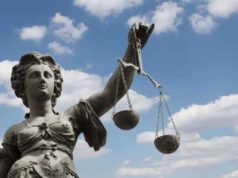
New York Times Co v United States, better known as the “Pentagon Papers case,” was a landmark legal battle that tested the balance between national security and press freedom. In 1971, The New York Times published a series of articles about a classified government study of the Vietnam War, which had been leaked to the paper by a former Defense Department employee. The government sought to block further publication of the papers, arguing that their release threatened national security.
The case went before the Supreme Court, which ultimately issued a ruling in favor of The New York Times. In their decision, the Court held that the First Amendment’s protection of freedom of the press outweighed the government’s desire for secrecy and that a prior restraint on publication of the material was unconstitutional. The Court concluded that the government had failed to meet the heavy burden of proof necessary to justify an injunction on publication.
The decision was a resounding victory for press freedom and established an important precedent for the balance between government secrecy and the First Amendment’s protection of a free press. The ruling allowed American journalists to continue their tradition of reporting on government actions and holding public officials to account, even in the face of government efforts to suppress information.
New York Times Co v United States also set the legal standard for future cases involving national security and press freedom. The ruling established that the government must meet a high burden of proof to justify a prior restraint on publication of information and that the mere possibility of harm to national security is not sufficient to warrant such a restraint.
Furthermore, the decision highlighted the critical role of the press in a democratic society. The Court recognized that the free flow of information is central to the functioning of a democracy and that the public’s right to know is paramount. By upholding the rights of journalists to report on government actions, the Court ensured that the public would continue to have access to information critical to informed decision-making.
In conclusion, New York Times Co v United States was a critical case that helped to define the balance between national security and press freedom. The case demonstrated the important role of the press in holding public officials accountable and maintaining an informed public. It also established important legal precedents that continue to guide future cases involving government secrecy and the First Amendment’s protection of a free press. Ultimately, the decision reaffirmed the enduring value of press freedom in American society.
The U.S. Courts have constantly battled with the interpretation and application of the United States Constitution. An issue that is constantly arising in litigation
in the Supreme Court is the First Amendment of the Constitution.
The rights guaranteed under the First Amendment, such as the freedom of speech, freedom of the press, and freedom of religion, have often been the subject of debate in the U.S. Courts and continue to be so in today’s society. U.S. Courts would once again have the responsibility of evaluating First Amendment rights once again in 1971, when the Supreme Court would hear theNew York Times. United States case.
The New York Times. United States would not be the first time that the U.S. Supreme Court would hear a case dealing with the freedom of the press granted under the Constitution’s First Amendment. However, this case was significant in the sense that it would pit a Constitutionally-protected right against the overall security of the nation. The case would be based on the fact that the New York Times would obtain a copy of Government documents that would be known as the “Pentagon Papers.”
The Pentagon Papers were a report originating from the Department of Defense that detailed controversial Government tactics in regard to the Vietnam War. The New York Times wanted to publish the documents and make them accessible to the public nationwide. Initially, an injunction was levied against the New York Times that would prohibit it from publishing the Government Pentagon Papers. The government claimed that in making the documents public, the nation’s security would be at risk.
However, the famous newspaper would fight the injunction by citing the First Amendment right to the freedom of the press. Warren E. Burger was the Chief Justice to hear the
case in the Supreme Court. The Court faced a difficult decision regarding the applicability of the First Amendment and to what extent the Constitutional rights granted should be implemented. Even though the Constitution proves to be the ultimate form of law in the United States, in certain instances its absolute adherence could prove to be a dilemma, such as in this particular case with the Pentagon Papers.
Key factors that was considered was whether or not the publishing of the Pentagon Papers
proved to be a danger to national security and whether or not the people had the right to be informed. Furthermore, the justification for rendering a decision for either party can prove to have detrimental circumstances in the form of future precedence for Constitutional interpretation of the laws.
However, The court would eventually grant the decision toThe New York Times, holding that the First Amendment rights of the Constitution should be absolute. Nevertheless, the Associate Justices of the Supreme Court had been in disagreement in the final verdict and even had reservations about hearing the case. Regardless, the case regarding the Pentagon Papers would be ruled in favor of protecting First Amendment Rights, which would later become used as precedence for further cases involving the freedoms granted by the Constitution.

























